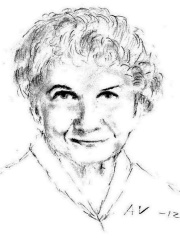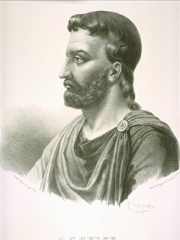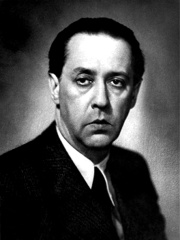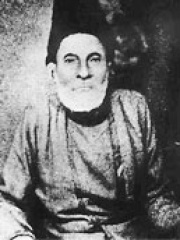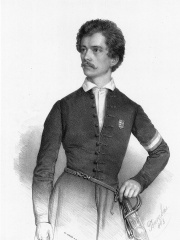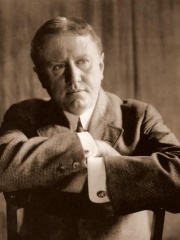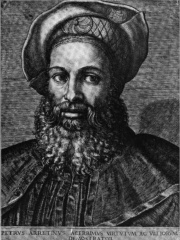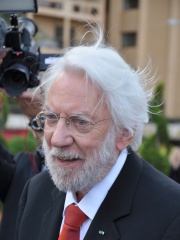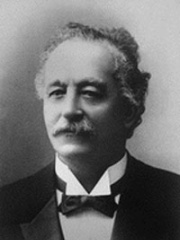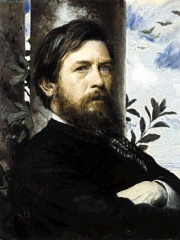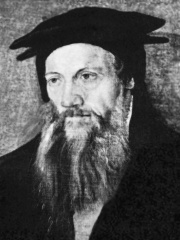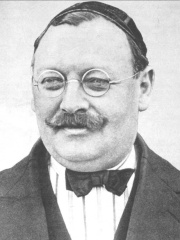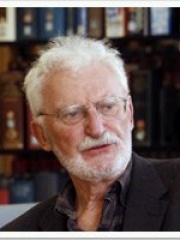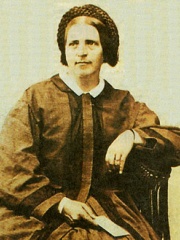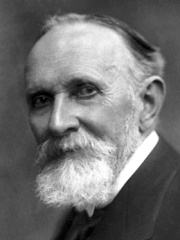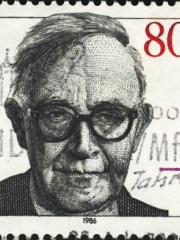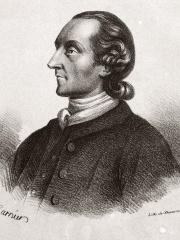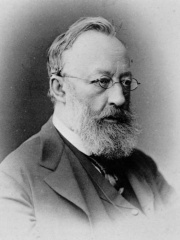WRITER
Erich von Däniken
1935 - Today

 Erich von Däniken
Erich von Däniken
Erich Anton Paul von Däniken (; German: [ˈeːrɪç fɔn ˈdɛːnɪkən]; born 14 April 1935) is a Swiss author of several books which make claims about extraterrestrial influences on early human culture, including the best-selling Chariots of the Gods?, published in 1968. Von Däniken is one of the main figures responsible for popularizing the "paleo-contact" and ancient astronauts hypotheses. The ideas put forth in his books are rejected by virtually all scientists and academics, who categorize his work as pseudohistory, pseudoarchaeology, and pseudoscience. Read more on Wikipedia
Since 2007, the English Wikipedia page of Erich von Däniken has received more than 1,876,423 page views. His biography is available in 45 different languages on Wikipedia (up from 44 in 2019). Erich von Däniken is the 396th most popular writer (down from 377th in 2019), the 29th most popular biography from Switzerland (up from 30th in 2019) and the 4th most popular Swiss Writer.
Erich von Däniken is most famous for his theory that ancient cultures were visited by aliens.
Memorability Metrics
1.9M
Page Views (PV)
68.40
Historical Popularity Index (HPI)
45
Languages Editions (L)
8.39
Effective Languages (L*)
2.95
Coefficient of Variation (CV)
Notable Works
Page views of Erich von Dänikens by language
Over the past year Erich von Däniken has had the most page views in the English wikipedia edition with 229,826 views, followed by German (149,994), and Spanish (38,640). In terms of yearly growth of page views the top 3 wikpedia editions are Uzbek (210.17%), Slovenian (45.73%), and Latvian (28.68%)
Among WRITERS
Among writers, Erich von Däniken ranks 396 out of 7,302. Before him are Alice Munro, Aulus Cornelius Celsus, Sándor Márai, Ali-Shir Nava'i, Ghalib, and Sándor Petőfi. After him are O. Henry, Jacques Prévert, Raymond Chandler, Pietro Aretino, Ismail Kadare, and Ágota Kristóf.
Most Popular Writers in Wikipedia
Go to all RankingsAlice Munro
1931 - Present
HPI: 68.48
Rank: 390
Aulus Cornelius Celsus
25 BC - 50
HPI: 68.47
Rank: 391
Sándor Márai
1900 - 1989
HPI: 68.46
Rank: 392
Ali-Shir Nava'i
1441 - 1501
HPI: 68.44
Rank: 393
Ghalib
1797 - 1869
HPI: 68.43
Rank: 394
Sándor Petőfi
1823 - 1849
HPI: 68.41
Rank: 395
Erich von Däniken
1935 - Present
HPI: 68.40
Rank: 396
O. Henry
1862 - 1910
HPI: 68.36
Rank: 397
Jacques Prévert
1900 - 1977
HPI: 68.35
Rank: 398
Raymond Chandler
1888 - 1959
HPI: 68.35
Rank: 399
Pietro Aretino
1492 - 1556
HPI: 68.35
Rank: 400
Ismail Kadare
1936 - Present
HPI: 68.33
Rank: 401
Ágota Kristóf
1935 - 2011
HPI: 68.33
Rank: 402
Contemporaries
Among people born in 1935, Erich von Däniken ranks 17. Before him are Donald Sutherland, Françoise Sagan, Isao Takahata, Hussein of Jordan, Michel Aoun, and Arvo Pärt. After him are Ágota Kristóf, Julie Andrews, Omar Sívori, Omar Bongo, Faisal II of Iraq, and Fairuz.
Others Born in 1935
Go to all RankingsDonald Sutherland
ACTOR
1935 - Present
HPI: 70.35
Rank: 11
Françoise Sagan
WRITER
1935 - 2004
HPI: 70.09
Rank: 12
Isao Takahata
FILM DIRECTOR
1935 - 2018
HPI: 69.44
Rank: 13
Hussein of Jordan
POLITICIAN
1935 - 1999
HPI: 69.16
Rank: 14
Michel Aoun
POLITICIAN
1935 - Present
HPI: 68.92
Rank: 15
Arvo Pärt
COMPOSER
1935 - Present
HPI: 68.79
Rank: 16
Erich von Däniken
WRITER
1935 - Present
HPI: 68.40
Rank: 17
Ágota Kristóf
WRITER
1935 - 2011
HPI: 68.33
Rank: 18
Julie Andrews
ACTOR
1935 - Present
HPI: 68.17
Rank: 19
Omar Sívori
SOCCER PLAYER
1935 - 2005
HPI: 68.12
Rank: 20
Omar Bongo
POLITICIAN
1935 - 2009
HPI: 68.00
Rank: 21
Faisal II of Iraq
POLITICIAN
1935 - 1958
HPI: 67.90
Rank: 22
Fairuz
SINGER
1935 - Present
HPI: 67.60
Rank: 23
In Switzerland
Among people born in Switzerland, Erich von Däniken ranks 29 out of 1,015. Before him are Élie Ducommun (1833), Bruno Ganz (1941), Arnold Böcklin (1827), Conrad Gessner (1516), Friedrich Dürrenmatt (1921), and Jacob Burckhardt (1818). After him are Jacques Necker (1732), Joan Gamper (1877), Heinrich Rohrer (1933), Carlo Maderno (1556), Hermann Rorschach (1884), and K. Alex Müller (1927).
Others born in Switzerland
Go to all RankingsÉlie Ducommun
SOCIAL ACTIVIST
1833 - 1906
HPI: 70.39
Rank: 23
Bruno Ganz
ACTOR
1941 - 2019
HPI: 70.35
Rank: 24
Arnold Böcklin
PAINTER
1827 - 1901
HPI: 69.58
Rank: 25
Conrad Gessner
BIOLOGIST
1516 - 1565
HPI: 69.26
Rank: 26
Friedrich Dürrenmatt
WRITER
1921 - 1990
HPI: 68.81
Rank: 27
Jacob Burckhardt
HISTORIAN
1818 - 1897
HPI: 68.55
Rank: 28
Erich von Däniken
WRITER
1935 - Present
HPI: 68.40
Rank: 29
Jacques Necker
POLITICIAN
1732 - 1804
HPI: 68.37
Rank: 30
Joan Gamper
BUSINESSPERSON
1877 - 1930
HPI: 68.34
Rank: 31
Heinrich Rohrer
PHYSICIST
1933 - 2013
HPI: 68.24
Rank: 32
Carlo Maderno
ARCHITECT
1556 - 1629
HPI: 67.96
Rank: 33
Hermann Rorschach
PSYCHOLOGIST
1884 - 1922
HPI: 67.85
Rank: 34
K. Alex Müller
PHYSICIST
1927 - 2023
HPI: 67.76
Rank: 35
Among WRITERS In Switzerland
Among writers born in Switzerland, Erich von Däniken ranks 4. Before him are Johanna Spyri (1827), Carl Spitteler (1845), and Friedrich Dürrenmatt (1921). After him are Karl Barth (1886), Robert Walser (1878), Alejo Carpentier (1904), Johann Ludwig Burckhardt (1784), Max Frisch (1911), Johann Kaspar Lavater (1741), Charles-Ferdinand Ramuz (1878), and Gottfried Keller (1819).
Johanna Spyri
1827 - 1901
HPI: 72.31
Rank: 1
Carl Spitteler
1845 - 1924
HPI: 70.40
Rank: 2
Friedrich Dürrenmatt
1921 - 1990
HPI: 68.81
Rank: 3
Erich von Däniken
1935 - Present
HPI: 68.40
Rank: 4
Karl Barth
1886 - 1968
HPI: 67.68
Rank: 5
Robert Walser
1878 - 1956
HPI: 66.34
Rank: 6
Alejo Carpentier
1904 - 1980
HPI: 63.93
Rank: 7
Johann Ludwig Burckhardt
1784 - 1817
HPI: 63.62
Rank: 8
Max Frisch
1911 - 1991
HPI: 63.30
Rank: 9
Johann Kaspar Lavater
1741 - 1801
HPI: 62.55
Rank: 10
Charles-Ferdinand Ramuz
1878 - 1947
HPI: 61.10
Rank: 11
Gottfried Keller
1819 - 1890
HPI: 60.70
Rank: 12
